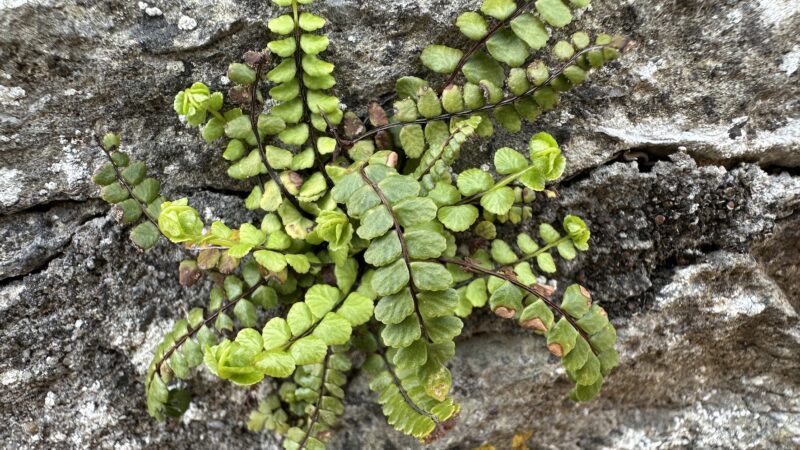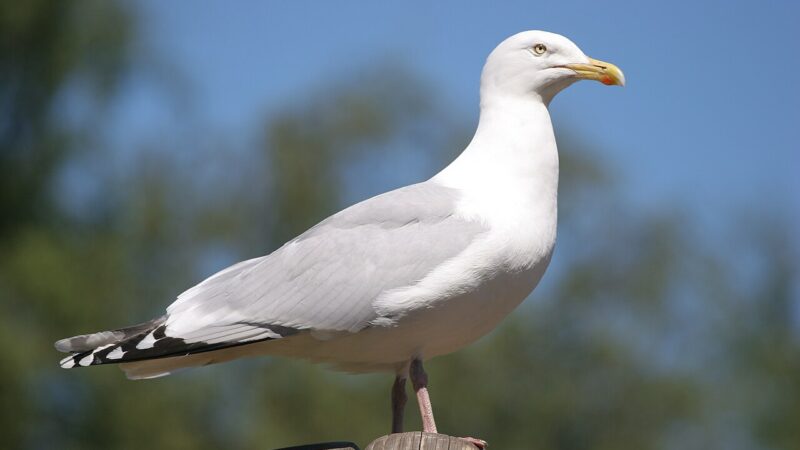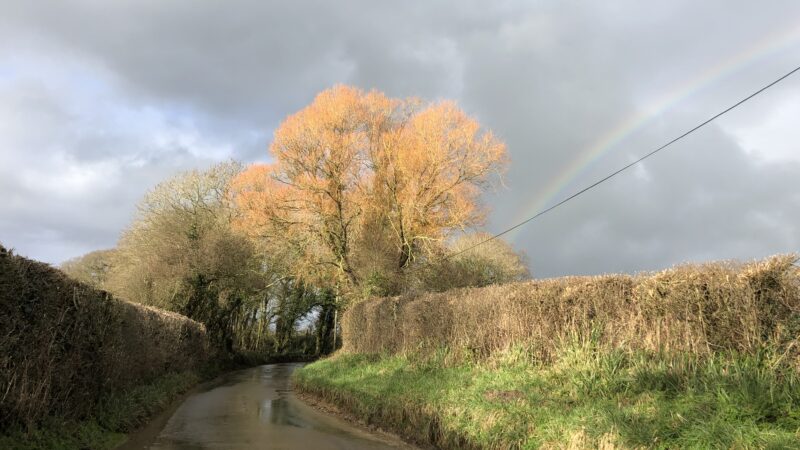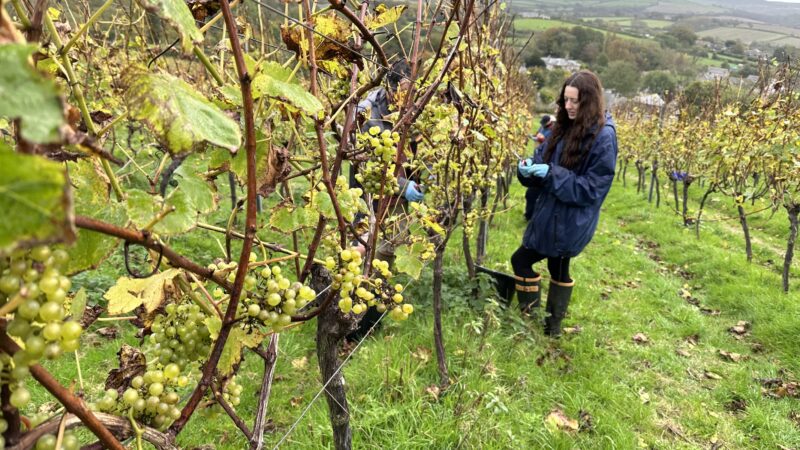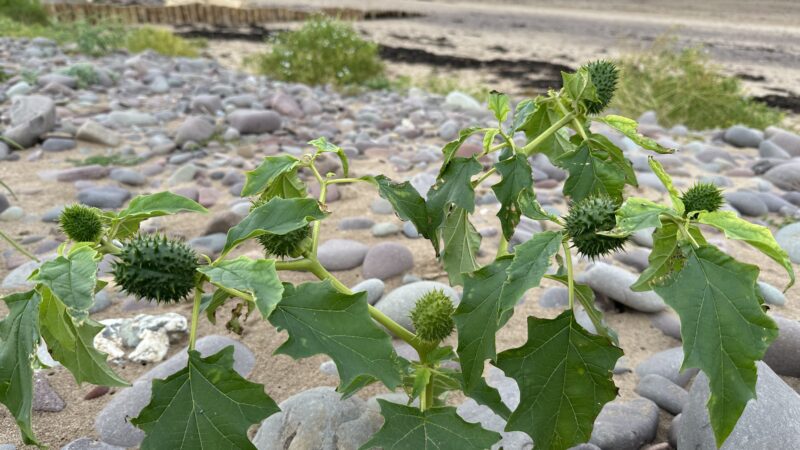The wood ants awaken – you can hear them
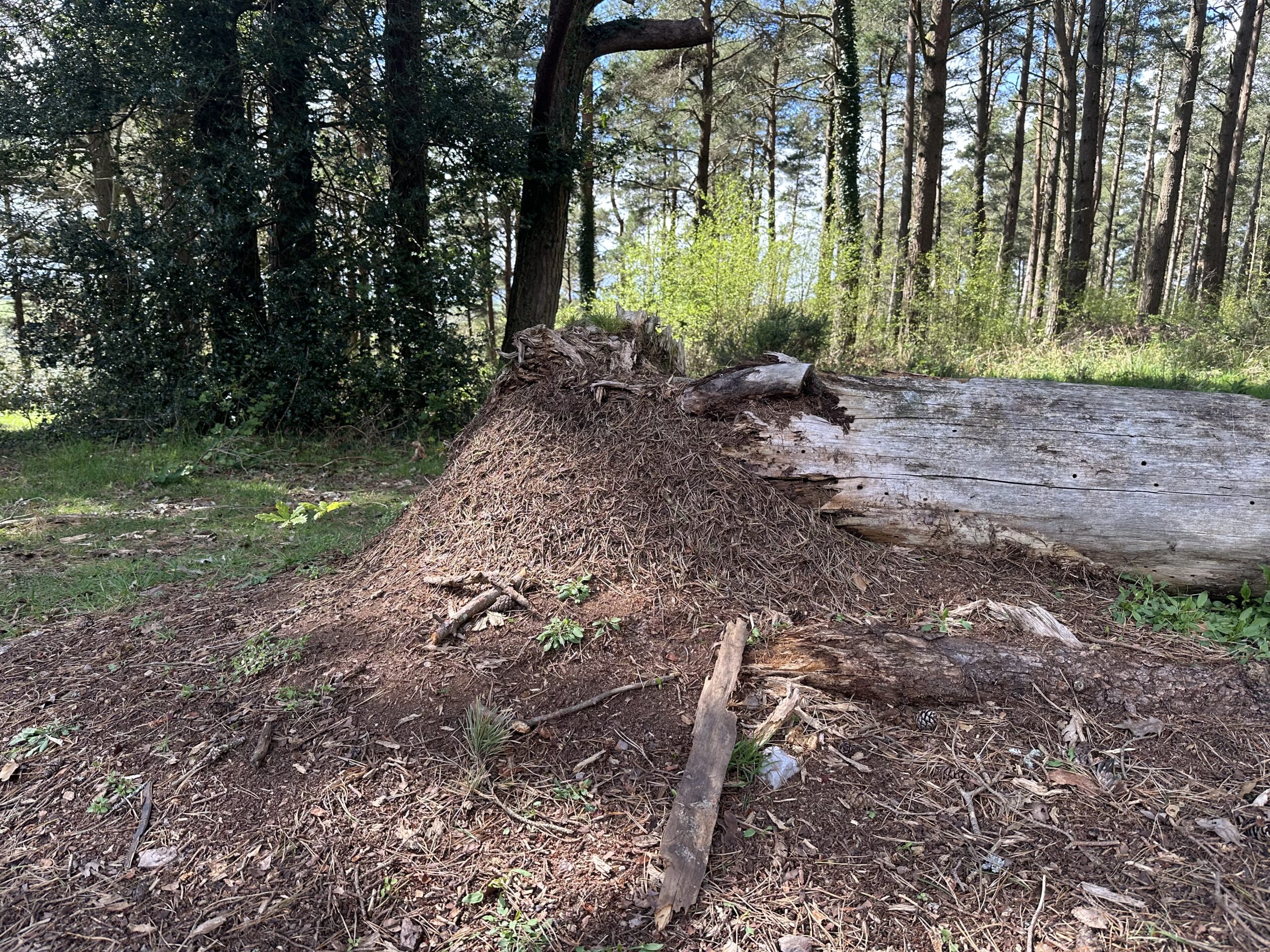
You can hear when the southern red wood ants wake up from hibernation. Heaps of soil, loose sticks and pine needles that lay inert all winter start seething with a continual, multidirectional flow of insects, whose footfalls make an incessant sizzling sound.
Exmoor’s woodlands are ideal for southern red wood ants (Formica rufa), the largest of the four British wood ant species. The sandy, sunny path at Webber’s Post above Horner is lined with nests, the biggest of which is a sprawling dun mound a metre high and nearly six metres across, with a network of hidden underground tunnels and chambers beneath. It’s possible that the whole stretch is really one linked colony divided into various nodes, each occupied by hundreds of thousands of workers and several queens.
Many of the nests are built against the trunks of fallen Scots pine trees – wood ants use an anti-microbial mixture of conifer resin and formic acid to kill harmful bacteria and fungal spores. On hot, dry days, active heaps emit a vinegary smell reminiscent of old chip wrappings.
Much is made of these ants’ supposed aggression – and yes, they will defend themselves if threatened. Come too close and they will sit up on their hind legs, cock their abdomens forward and jet repeated, stinging streams of acid from their venom glands. But behave with respect, and they will ignore you, intent on their own purposes of gathering food and nest materials.
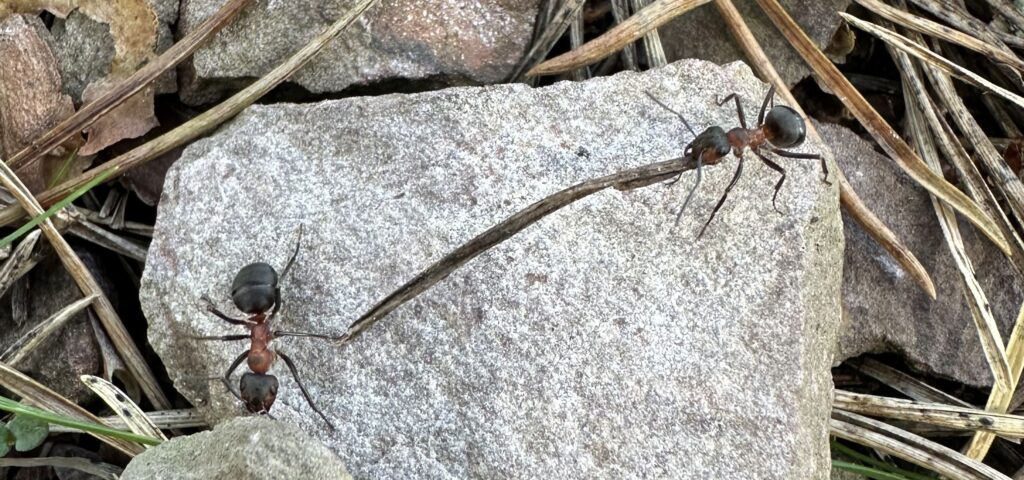
They are beautiful to watch, their red thoraxes slightly translucent like beads of scuffed amber, glowing against the banded black silk of their huge abdomens. Broad, apple-pip heads, with large, slightly bulging eyes, taper down to long, segmented antennae and massive mandibles for biting, hooking and lifting. Each ant can move up to a hundred times its own weight.
These colonies are busy raising males and new queens from eggs laid a few weeks ago. On warm, still mornings towards the end of this month, they will emerge with glittering wings and take to the air to mate. The males will die soon afterwards, but successful mated queens can live for a decade or more.
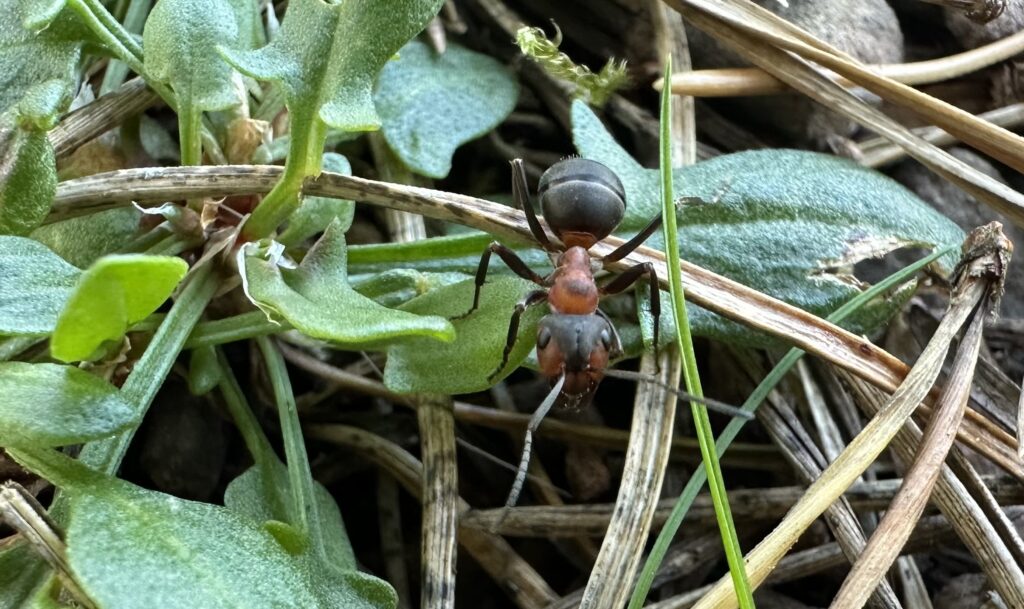
First published in The Guardian’s Country Diary, 1 May 2025.
